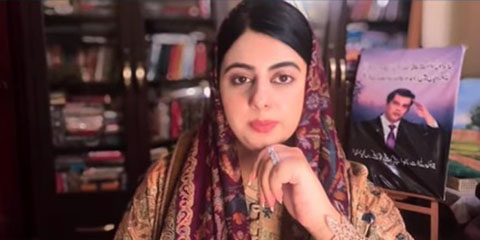How TikTok is transforming digital media with engaging short-form content
JournalismPakistan.com | Published: 9 June 2024
Join our WhatsApp channel
TikTok has become a leading platform for short-form content, revolutionizing how users create and consume media. Its unique algorithm and diverse content have captivated a global audience, influencing traditional media outlets to adapt.Summary
BEIJING—TikTok, the popular short-form video app, continues to lead the digital media race by captivating millions of users worldwide with its engaging and concise content. The app, owned by the Chinese tech company ByteDance, has revolutionized the way people consume and create media, significantly impacting the global digital landscape.
TikTok’s rise to prominence has been meteoric since its international release in 2016. By offering a platform for users to share 15-second to 3-minute videos, TikTok has become a hub for creativity, entertainment, and information. The app's unique algorithm, which curates personalized content for users, has been a significant factor in its success, making it highly addictive and engaging.
According to recent reports, TikTok surpassed 3 billion downloads globally, becoming the first non-Facebook app to achieve this milestone. As of 2023, it boasted over 1 billion active users each month, with a significant user base in the United States, Europe, and Asia. This growth is not only in user numbers but also in the diversity of content available, ranging from dance challenges and comedy skits to educational videos and news snippets.
TikTok's success has forced traditional media outlets to adapt. Many news organizations and brands have joined the platform to reach younger audiences, who increasingly prefer short-form content over traditional media. For instance, The Washington Post and NBC News have launched successful TikTok accounts, leveraging the platform to share news in a more engaging and digestible format.
The app has also played a crucial role in the rise of the influencer economy. Content creators on TikTok can monetize their videos through brand partnerships, sponsored content, and the app's Creator Fund, which pays users based on their video views. This has created a new generation of digital influencers who command significant sway over their followers.
TikTok continues to innovate with new features such as live streaming, augmented reality filters, and e-commerce integrations, further solidifying its position at the forefront of digital media. These advancements are designed to enhance user experience and provide more opportunities for content creators and brands to engage with audiences.
Despite its success, TikTok faces ongoing scrutiny regarding data privacy and security concerns, particularly from Western governments. The app has been banned in several countries and is under continuous regulatory review. However, TikTok's management is actively working to address these issues by implementing stricter data protection measures and increasing transparency.
Looking ahead, TikTok's influence on the digital media landscape shows no signs of waning. The app's ability to adapt and innovate will likely keep it at the forefront of the industry, continually shaping the way content is consumed and created.
KEY POINTS:
- TikTok has over 1 billion active users monthly as of 2023.
- The app surpassed 3 billion downloads globally, a record for non-Facebook apps.
- Content creators can monetize their videos through various partnerships.
- TikTok's innovations include live streaming and augmented reality features.
- The app faces scrutiny over data privacy but continues to grow.

























